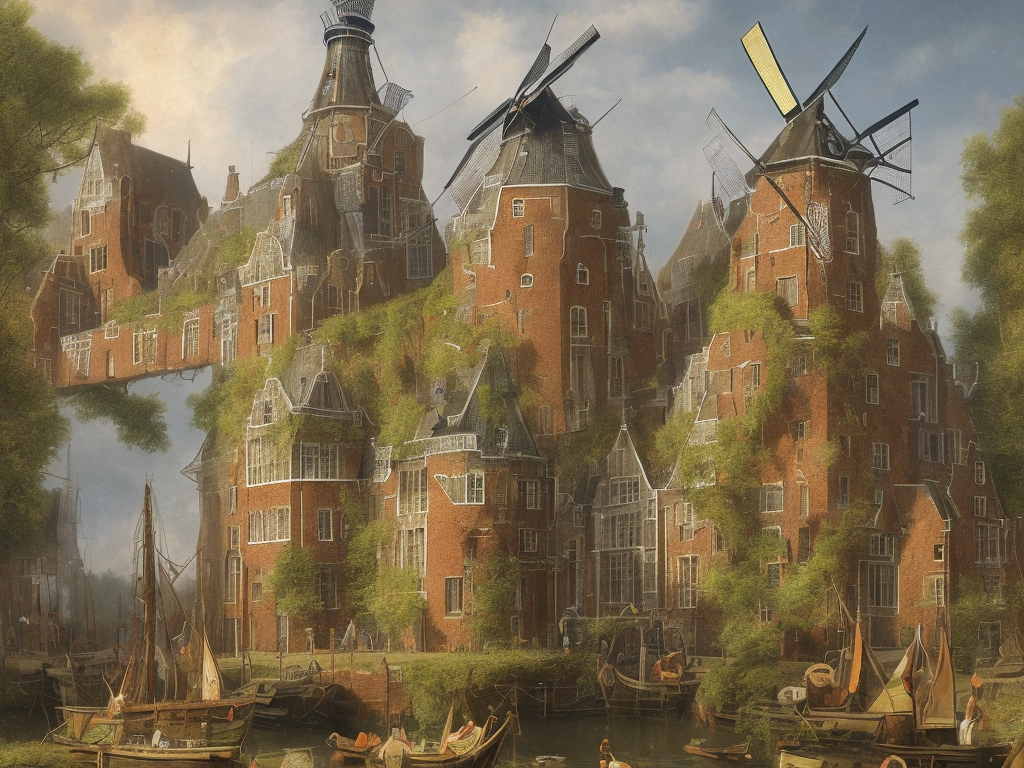
The terms "Holland" and "Netherlands" are often used interchangeably to refer to the same country, but they actually have distinct meanings. While Holland is a region within the Netherlands, it is not equivalent to the entire country itself. Understanding the difference between these two terms is essential in order to accurately refer to the country and its regions.
To begin with, the Netherlands is a country located in Northwestern Europe. It is bordered by Germany to the east, Belgium to the south, and the North Sea to the north and west. The Netherlands is known for its picturesque landscapes, windmills, tulip fields, and charming canal-side cities such as Amsterdam, The Hague, and Rotterdam. The country holds a significant place in European history, culture, and economy.
On the other hand, Holland refers to two provinces within the Netherlands: North Holland and South Holland. These two provinces are located in the western part of the country and are densely populated. They encompass major cities like Amsterdam, Rotterdam, The Hague, Leiden, and Haarlem. Due to their economic significance and global recognition, the terms "Holland" and "the Netherlands" have often been used interchangeably, leading to some confusion.
Historically, the regions of North Holland and South Holland were the most influential and prosperous provinces of the Netherlands. They played a crucial role in the country's economic development during the Dutch Golden Age in the 17th century. This period saw the rise of the Dutch East India Company, extensive trade networks, and cultural achievements, making Holland synonymous with prosperity and progress. Therefore, when people used the term "Holland" to describe the Netherlands, they were often referring to the prominence and success of these two provinces.
One possible reason for this confusion is the fact that Amsterdam, the capital city of the Netherlands, is located in North Holland. Amsterdam has become a symbol of Dutch culture, known for its iconic canals, historical landmarks, and vibrant atmosphere. It attracts millions of tourists each year who often believe that visiting Amsterdam means they have seen everything the Netherlands has to offer. However, the country has much more to offer beyond Amsterdam and the Holland region.
The Netherlands consists of 12 provinces in total, with North Holland and South Holland being just two of them. The other provinces include Friesland, Groningen, Drenthe, Overijssel, Flevoland, Gelderland, Utrecht, North Brabant, Limburg, and Zeeland. Each of these provinces has its own distinct characteristics, cultural heritage, and unique landscapes. For instance, Friesland is known for its Frisian language and the iconic Eleven Cities ice skating tour. In contrast, Limburg has a distinct culture influenced by its proximity to Germany and Belgium.
By using the term "Netherlands" instead of "Holland," one acknowledges and respects the diverse regional identities and contributions of all the provinces. Although Amsterdam and the Holland region have had a significant impact on the country's history and global image, it is essential to recognize the entire country's cultural and geographical diversity. This allows for a more inclusive representation of the Netherlands and fosters a deeper understanding and appreciation of its richness.
Moreover, using the correct terminology is also helpful in distinguishing between the national and regional soccer teams. The national team represents the entire Netherlands in international competitions and is commonly known as the "Dutch national team." However, when it comes to club teams, the most famous clubs such as Ajax, Feyenoord, and PSV Eindhoven are based in the Holland region, leading to them being referred to as "Dutch clubs" or even simply as "Holland teams." This distinction helps avoid misunderstandings and connects the team's identity to its geographic location.
In conclusion, while the terms "Holland" and "the Netherlands" are often used interchangeably, they refer to different entities. Holland refers to the provinces of North Holland and South Holland in the western part of the Netherlands. On the other hand, the Netherlands refers to the entire country, encompassing 12 provinces. Understanding and using the correct terminology helps to acknowledge the country's regional diversity and cultural richness, thereby fostering a more comprehensive understanding of the Netherlands.
 Self-Instruct
Self-Instruct